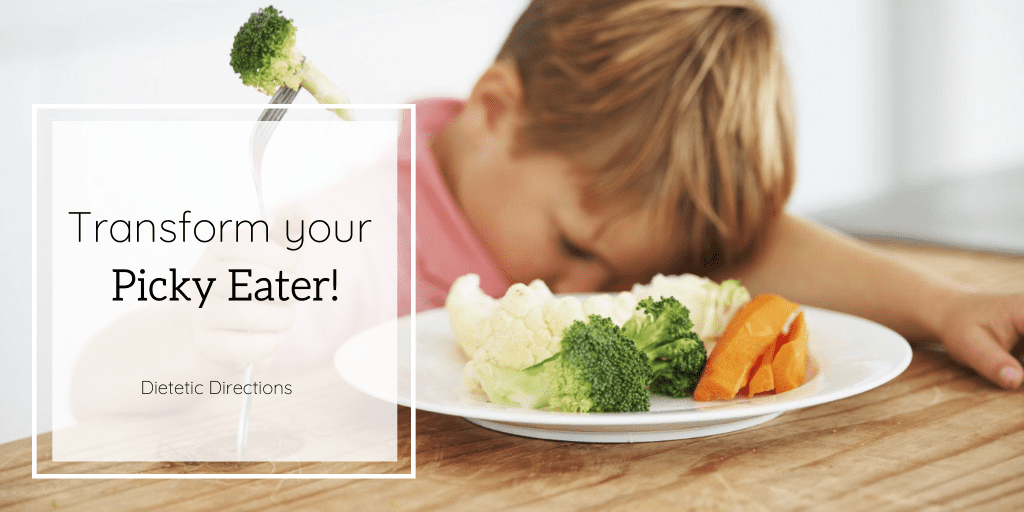
Transform your Picky Eater!
Are meal times with your picky eater a source of tremendous stress? Will your child start crying or fussing at the sight of a new and unfamiliar food? Are you concerned about your child’s nutritional intake considering the short list of foods that he or she will actually eat? These are common concerns that often bring nervous parents in seeking the support of a Registered Dietitian.
It is important to note that meal times SHOULD NOT be stressful! Keeping a calm and relaxed eating atmosphere helps children develop confidence and positive associations with food. Rest assured that children will naturally test their limits and it is the parent’s job to set appropriate feeding boundaries. The feeding strategies discussed here are from the indispensable book, Child of Mine: Feeding with Love and Good Sense by Ellyn Satter, RD.
A calm eating atmosphere helps children develop confidence and positive associations with food. Share on XWhat is the “Division of Responsibility in Feeding”?
The parent is responsible for what foods are served, when and where meals or snacks take place. The child is responsible for how much and whether to eat. Simply put, it is the parent’s job to feed and the child’s job to eat.
Tips for Building Your Child’s Food Confidence!
- Have regular, scheduled meal and snack times (Child should feel hungry but not ‘starving’)
- Arrange “sit-down” family dinners where parents can role model eating different foods BUT there is no pressure for child to try new foods.
- Teach your child to say “no thank you” instead of “eww” or “yuk”.
- Always pair a new food with a familiar/accepted food (ex. If carrots are enjoyed include these along with peas, which may be new).
- Put 1 or 2 food items on the table that child always accepts (ie. bread and milk).
- Allow your child to choose WHAT he/she would like to eat (from what is being offered at that meal) and HOW MUCH he/she wants to eat.
- Always offer the same food for your child as the rest of the family. You are not a short order cook!
- Napkin can be used by the child to remove food from their mouth if child decides they do not want to swallow it; thus, making the child braver to try new foods.
Common Feeding Pitfalls:
- Lack of meal and snack structure
- Child eats and drinks whenever they choose. (Note: water should always be available, otherwise, child waits until determined meal/snack time.)
- Parent limits the menu to only what the child likes
- Parents coerces or puts pressure on child to eat foods
- Food used as a reward or punishment (ex. if you eat your vegetables you will get dessert)
Bottom Line:
As the parent, you can help your child develop positive feelings around eating and trying new foods by setting structure, role modeling, staying positive (not stressed/angry) and avoiding the tendency to cater to your child’s demands. Rest assured, your child will not starve themselves! If these strategies seem like “tough-love”, I encourage you to persevere knowing that your child will begin to respect and understand the new boundaries set to develop eating confidence.




